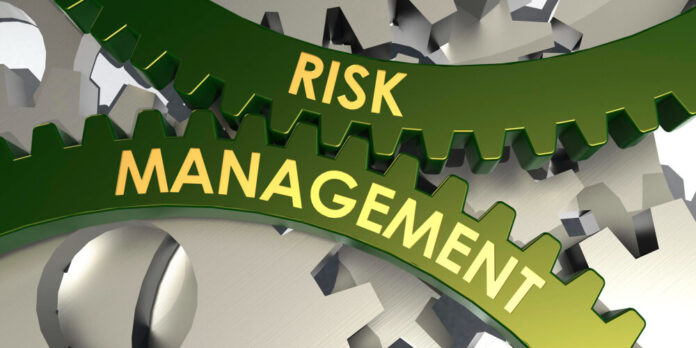In life and business, we all face uncertainties. Risk management is about handling these uncertainties. It’s key for both companies and individuals. This process includes spotting, examining, and dealing with potential threats.
These threats can affect a company’s money and success or harm a person’s health and belongings. They stem from various sources including financial uncertainties, legal liabilities, strategic management errors, accidents, and natural disasters.
Handling these risks well is vital. It helps businesses grow and stay strong. It also keeps people safe and secure. So, in this article, we’ll explore what risk management really means. We’ll look at its methods, how it’s used, and why it’s so important today.
The Concept of Risk Management
At its core, risk management refers to the process where you are able to identify potential risks well before they happen. That way, you are able to analyze them and know what precautionary measures you can take to reduce or mitigate the risk.
In a business context, it is an integral part of the management strategy, as it helps businesses prepare for the unknown by minimizing risks and extra costs before they happen. For individuals, it involves making choices that reduce the chances of negative impacts on personal health or assets.
The first step in risk management is identifying potential risks, which can be internal or external to a business or individual. This process involves understanding the nature of potential risks and their origin.
Once identified, the risks are then analyzed to understand their potential impact. This analysis is critical in setting priorities for risk management actions.
There are various strategies employed in managing risks, including:
- Risk Avoidance: Changing plans to avoid the risk.
- Risk Reduction: Taking steps to reduce the severity or likelihood of the risk.
- Risk Sharing: Sharing the burden of the risk with other parties (e.g., insurance).
- Risk Retention: Accepting the risk and preparing for its impact.
The choice of strategy depends on the risk’s severity and the entity’s ability to handle the potential fallout.
Risk Management in Business
Risk management is a crucial part of business. It’s about safeguarding a company’s resources, its good name, and its long-term existence. This involves different strategies.
Financial risk management, for instance, deals with risks in financial markets and uses financial tools to manage them. Operational risk management tackles issues like technical glitches, fraud, and other setbacks.
Then there’s enterprise risk management, which takes a broad view. It looks at all the risks a company could face.
Modern risk management employs a range of tools and techniques. These include:
- Risk Assessment Templates: Tools to identify and assess risks.
- Software Solutions: Programs that help in monitoring and analyzing risks.
- Scenario Analysis: Exploring different scenarios to understand potential risks.
- Risk Registers: Keeping records of identified risks and how they are being managed.
Risk Management in Personal Life
Risk management is not confined to businesses; it’s equally essential in everyday life. It involves making decisions that reduce the risk of financial loss or health issues, such as purchasing insurance, investing in health and safety measures, or making prudent financial choices.
Insurance plays a significant role in risk management strategies, both for businesses and individuals. It serves as a risk transfer mechanism, where the risk of financial loss is transferred to the insurance company in exchange for premiums.
The Importance of Risk Management
Effective risk management is vital for several reasons:
- Prevents Financial Loss: Helps in avoiding or mitigating financial losses.
- Supports Planning: Enables better planning by factoring in potential risks.
- Protects Reputation: Particularly for businesses, managing risks helps in maintaining a good reputation.
- Ensures Compliance: Helps in ensuring compliance with laws and regulations.
- Promotes a Safe Environment: In a personal context, it contributes to a safer living or working environment.
Risk management faces several challenges, including the unpredictability of some risks, difficulty in accurately assessing potential impacts, and ensuring all potential risks are accounted for.
The rapidly changing global landscape, technological advancements, and evolving regulatory environments also add to these challenges.
The future of risk management is likely to see increased reliance on technology, particularly in the use of data analytics and AI for risk identification and assessment.
Additionally, the focus on sustainable and ethical business practices is expected to bring environmental and social governance risks to the forefront.
Final Note
Risk management is all about being prepared and foreseeing potential problems, crucial in both business and personal life. It’s more than just avoiding financial loss; it involves a range of actions that help maintain stability and resilience for both organizations and individuals.
In business, it’s a constantly evolving field, adapting to market changes, new technologies, and global trends. The future points towards more use of technology like analytics, AI, and machine learning to better predict and handle risks.
It also means paying more attention to emerging risks like cyber threats, climate change, and geopolitical shifts. For individuals, it means making smart choices in health, investments, and property, and being ready for the unexpected, to ensure safety, financial security, and peace of mind.
















